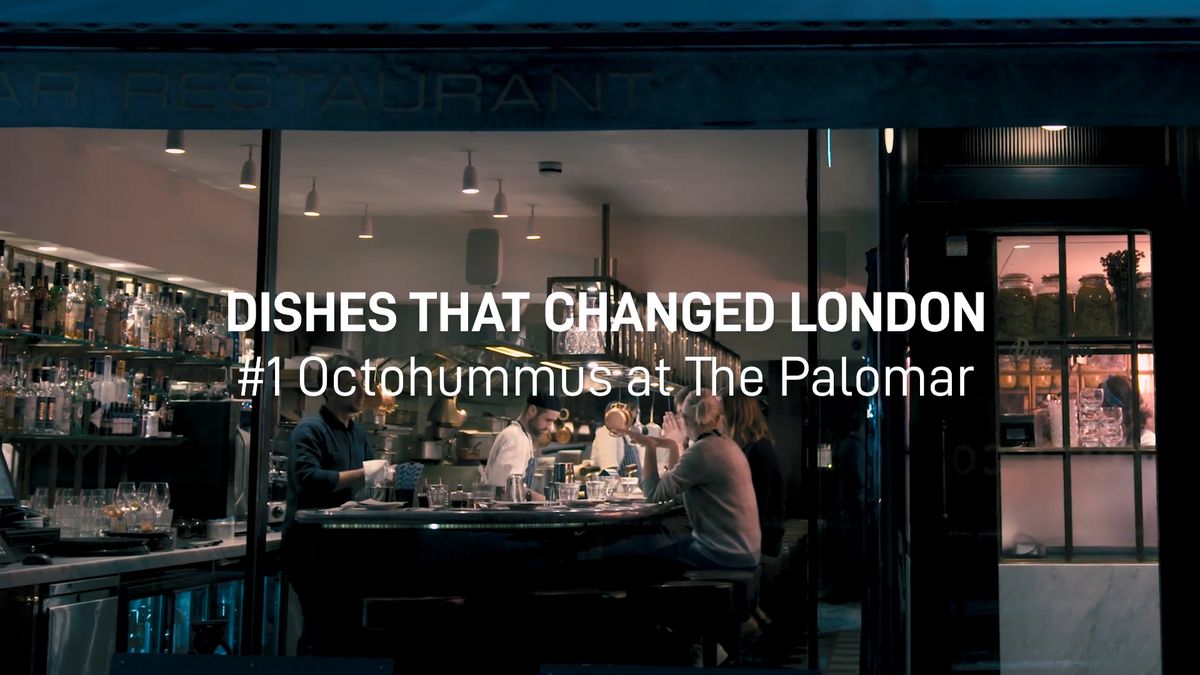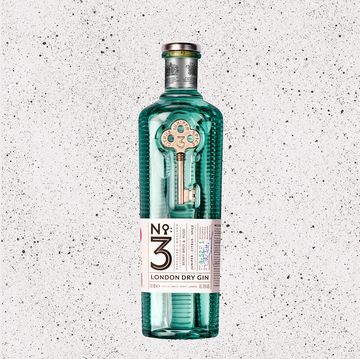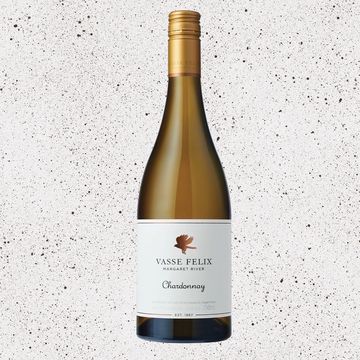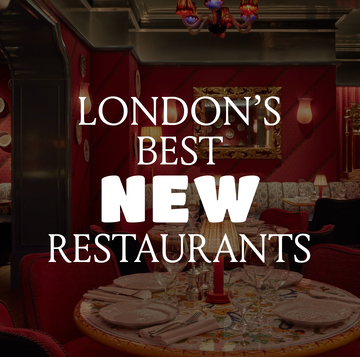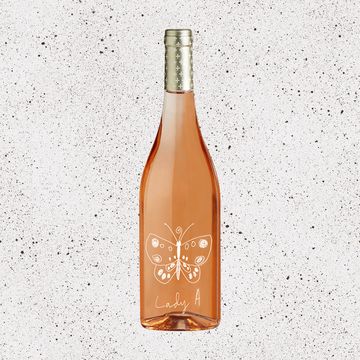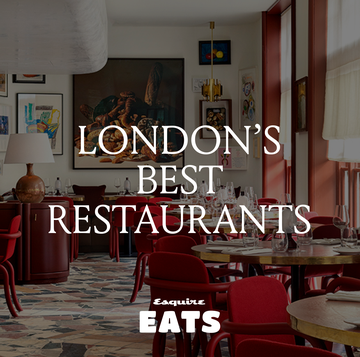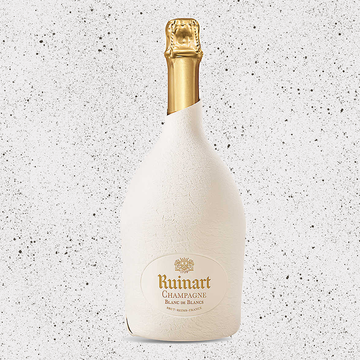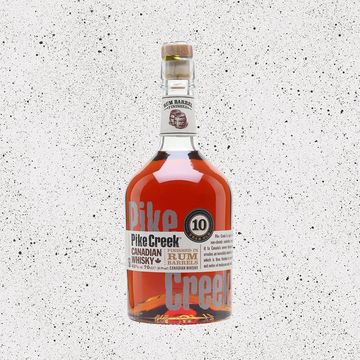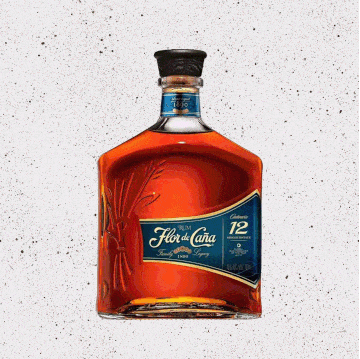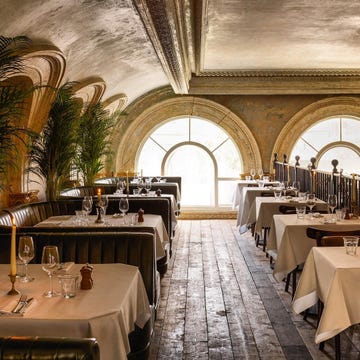Have we reached peak beer? It’s a question I’ve asked myself a lot over the last year, often on Friday afternoons, when a bewildering array of the stuff arrives in crates to the off-licence my wife and I own on the south coast. Ordering new stock has become increasingly perplexing, and I’ve had to cultivate my gut feeling for how demand shifts, selecting ever-changing orders from the limited editions, one-offs and collaborations between small, cutting edge artisan brewers in Britain, Scandinavia and America. These beers often sell out as fast as I order them, and then disappear, never to be offered again, popping in and out of existence like a shimmering web of quantum particles.
Sticking with the particle physics analogy, beer seems to be making a quantum leap at the moment. A new plateau is being marked out, a glorious new normal that didn’t exist years ago. It’s how it must have been when Dom Pérignon accidentally invented Champagne, tasting his botched wine, nearly falling off his seat, shouting, “Come quickly! I am drinking the stars!”
Each week, there may be a new marshmallow stout from Omnipollo in Stockholm, like drinking the most luxurious chocolate cake; a hazy IPA from Manchester’s Cloudwater Brew Co, hopped so vividly it makes the back of your tongue zing; a juicy pale ale from Verdant, a Cornish brewer which has come from nowhere to be the hippest name in craft brewing in a year, thanks to its carefully nuanced beers as refreshing as freshly squeezed breakfast juice.
Last year, the number of UK breweries rose above 2,000 for the first time since the Thirties, with new breweries up by 64 per cent since 2012, reversing 70-plus years of much-criticised consolidation in the industry. Smaller breweries continue to reap the rewards of a tax break introduced in 2002 by then-chancellor Gordon Brown, paying 50 per cent less beer duty than larger rivals. While rising demand for craft beer has created more competition and seen big brands either buy up existing names (America’s Anheuser-Busch InBev, the world’s largest brewer, bought Camden Town Brewery for £85m in 2015) or launch their own (Hop House 13 lager, introduced by Guinness owner and drinks conglomerate Diageo in 2015) in an effort to join the trend, young breweries continue to launch new beers every month.
Demand for some of these blink-and-you’ll-miss-them masterpieces has reached such fevered extremes I’ve learned to be at my laptop at the precise time my various beer suppliers post their new lists online each week. When I get the email, I ring immediately (and repeatedly) to a permanently engaged number. After finally getting through, they’ll say they are very sorry but all the Omnipollo, Cloudwater and Verdant has sold out. Again.
The situation is even madder in America where a handful of beers, like Pliny the Elder from California or Heady Topper from Vermont, are so in-demand they’ll never find their way onto mine, or anyone else’s, wholesale list. They don’t even get out of the brewery, let alone the country. Brewed in tiny quantities, they excite such hysteria that on the day of release buyers queue around the brewery fence: by lunchtime all the fresh beer’s sold. In the same way most Bordeaux lovers accept they will likely never drink a Château Mouton Rothschild, I’ve resigned myself to accepting I will probably never taste, let alone purchase a pallet of, Heady Topper.
Not that I really need to. There’s an embarrassment of riches on our doorstep. Recently, I received a one-off collaboration between Cloudwater and an obscure Danish brewery called Dry & Bitter; one sip and I instantly knew this beer was perfect. My mate came in later that day wondering what to buy. “Get this one! It’s like… it’s like…” I struggled to describe its next-level, future-perfect quality. “It’s like Batman’s car!” He texted me that night, excitedly telling me he agreed. We didn’t tell anyone else about this beer, it had a low-key label and I stashed it in a quiet corner of the fridge. Between us over the following week or so we drank most of the crate, referring to it thereafter only by our codename: Batman’s Car.
Batman’s Car was a very fine but by no means unique example of the new kind of beer that’s largely been driving the current surge: “double dry hopped” or “New England” style pale ales and IPAs, that insanely juicy, hazy style you’ve probably come across that seems halfway between a hoppy modern ale and a foodie version of Fruit Salad chews and Lilt soft drink. People go crazy for the stuff, and whenever I get a load in the shop it’s like feeding time at the zoo. As with most desirable artisan products it’s not cheap: the good gear is around six quid a can, but no one seems to mind and customers regularly buy 40-quid selections.
As both a craft beer believer and a shopkeeper whose business is currently buffeted along by the unrelenting novelty and excitement of one-off and small-batch brews, I keep wondering (and worrying) if the wave’s going to break any time soon. Can brewers keep on upping the ante indefinitely, or is the uncharted deliciousness of these beers approaching its upper limits? Will the novelty wear off?
I was thinking about this when I went to Manchester, one of the cities leading the current craft brewing revolution, to gauge where we’re at as a beer culture, and what might be coming next. Not least from the aforementioned Cloudwater Brew Co which, since it was established in 2014, has more than any other defined the new direction beer has taken in the UK. Its DIPAs (Double IPAs up to nine per cent ABV) were instant classics brewed in Britain and ever since it has been running with the baton. Recently voted second-best brewery in the world by America’s most influential craft beer site RateBeer, Cloudwater last year made national headlines when a London pub priced pints of Cloudwater Double IPA at £13.40. (Connoisseurs pointed out this was misleading as it should really be served in half- or third-pints due to its nine per cent alcohol strength.) So in-demand are Cloudwater’s limited-edition batches of beer, I’m over the moon when I get my hands on a case or two, but loads inevitably fall through the net. They have a tap room in Manchester in the railway arches at the back of Piccadilly Station, a place talked about in reverential tones, and I couldn’t wait to drink at this font of wisdom.
I wiled away the pleasant train journey through the Midlands alongside the early industrial relics of the Grand Union Canal, browsing the website of my favourite clothes shop, Oi Polloi, the Manc emporium for the bloke who likes clever, well-considered functional clothing. Its site is a treasure trove, and I soon got sucked into an essay by Eddy Rhead about post-war Italian design: “Italian design works best when it’s aimed at the masses. You can keep your ostentatious Ferraris and your unaffordable Dolce & Gabbana, I’d much rather drive around in an old Fiat 500 with a fresh pair of white Superga on my feet, maybe stop off at a bar for a cheeky Cinzano, then tap out a couple of chapters of a novel on my portable Olivetti Valentine.”
Halfway through reading, it struck me that a knowledgeable essay on the history of post-war Italian architecture and design was unusual to find on a clothes shop’s website, before it dawned on me it was a very Manchester thing to find on a Manchester clothes shop’s website. It is the city that in the 1790s built the first factory, a vast cotton mill in Ancoats that became the template for functional industrial design for the century to come. Then 180 years later, it gave us Factory Records, with the clarity and precision of Peter Saville’s record sleeves, and the exposed steel girders, cats’ eyes on the dance floor and black and yellow warning chevrons of the Haçienda club, where Manchester’s industrial functionalism was re-imagined as something hedonistic, glamorous and democratic — the spirit of the city itself.
Suddenly, it made perfect sense that Cloudwater’s intelligent design aesthetic would emerge from here. Instead of a skull and crossbones or some other try-hard rock ’n’ roll affectation on your beer can, here is a drink in a bare aluminium tube, adorned with a sparse white label with a restrained flourish of painterly colour, boxed off in a tight rectangle in the middle, the name Cloudwater in a supremely sensible sans-serif typeface below it.
Aside from the amazing juicy flavours they’ve created, the brewery’s aesthetic packaging was a breath of fresh air when Cloudwater Brew Co launched four years ago. Beer was at a stage where the spurious heritage branding of Bishop’s Fingers or Hobgoblins had been superseded by that equally inauthentic tattoo/graffiti/Harley-Davidson look that still puts me off even the best American craft beers. Cloudwater ditched all that, taking its name from a Zen Buddhist phrase unsui, “cloud, water”, used to describe a wandering novice who has undertaken training “to drift like clouds and flow like water”. Everything about a can of Cloudwater says here is a thinking man’s beer. This is beer as a design for life, the kind of craft beer Le Corbusier might drink.
Excitement rose in the pit of my stomach as I stepped out of Piccadilly station into an unfamiliar world of trams, canals and massive brick buildings. In my hotel room I turned on the oversized plasma screen, serendipitously to ITV3 and a shot of the big, foamy head on a nut-brown pint of traditional Northern bitter being poured by a scowling, much younger Jack Duckworth: “What’s up with you tonight? You’ve got a face like a gas man’s mask,” said a youthful, surprisingly sexy Bet Lynch, big Eighties’ gold earrings and bigger Eighties’ gold hair, and it surprised me to find I fancied her now we were the same age. Next to the TV was a framed black and white historic photo of the area behind the hotel showing a chimney with the word Boddingtons in white letters down its side. No wonder they make great beer here these days, this city is steeped in the stuff. It oiled the wheels of the world’s first industrial metropolis, flowing like a canal through its working class culture and mythology. I wanted a pint made in this capital of beer. I left the unpacking and made a beeline for the Northern Quarter.
i headed first to the port street beer house, a tiny little pub I’d heard good things about from its instrumental role in the Independent Manchester Beer Convention, one of the UK’s most forward-thinking craft beer festivals. Happily, even though this pub may be a contemporary craft beer Mecca, it maintains the tradition of Northern boozers: friendly drinkers of varying stripe all happy to be in it. I got a stool by the bar in the middle of the convivial throng and instantly felt at home. Looking over the casks and kegs, I was pleased to see beer from small Northern artisan breweries — Bradford, Macclesfield, Leeds, some I’d heard of, some not. Living on the south coast, it was a very pleasant novelty.
For the first beer of my adventure I fancied something from Track, a Manchester brewery I’d never tried. The pub had on its session pale called Sonoma. “Do you want it on keg or cask?” the barmaid asked, a question I’m not used to. As owner of a small bottle shop stocking mainly cans and a couple of beers on keg, I presumed (wrongly) that craft beer comes in little plastic kegs, while real ale had to be cask-conditioned, not expecting the modern stuff to come hand-pulled from those lovely big old wooden hand pumps, too. “Is it nice on cask?” I asked, incredulously. “It’s gorgeous on cask,” she said, “give it a go.” “Why not?” I said, not sure what to expect.
That sweet golden nectar wet my thirsty lips, and like a minor epiphany, made me instantly reevaluate my ideas about what craft beer could be. Something about it being pulled in the old-fashioned way, giving a warmer, flatter beer, brings rounded, mellow depths to the flavour I would never expect from modern pales, which often as not are all about a big juicy slap round the chops, sometimes at the expense of the subtler flavours inherent in the marriage of malt and hops. This beer seemed to pull off balancing both. I scrabbled around well-worn, go-to descriptions of modern pales: fruit salad, yes; grassy, floral notes, yes; resiny note of pine, yes, slightly. It did all the modern things but what made the Track so interesting was I could also taste the complexity of traditional hops. It was like craft beer in real ale’s clothing — The Stone Roses’ first album snuck in between The Beatles’ catalogue. This beer transcended the disconnect between real ale and craft beer, distilling the history of Northern brewing culture into one pint.
Obviously, being warmer and less fizzy than keg beers, but also intriguing and totally delightful, it was gone before I knew it. For the sake of comparison I got a half of it from the keg which was indeed lovely, more like the grapefruity juice bombs that fly out of my shop: refreshing, sharp, but what I’ve come to expect. The cask version seemed unique, though, and I found myself thinking about it the whole time I was in Manchester (and even later, back at home down south, I wished I could taste it again).
On the barmaid’s recommendation, I went off to sample another hand-pulled pale that was fresh as a daisy in a grassy field at The Smithfield Market Tavern, the Blackjack Brewery pub around the corner, which again combined a thirst for the highest caliber of artisan beer with the welcoming vibes of a proper pub. The Northern Quarter has no shortage of cocktail lounges with as much character as trendy hotel lobbies, but what I loved about its beer culture is that it’s still squarely anchored in the city’s pub culture: it’s central, sacred, part of the warp and weft of old Cottonopolis, where beer is a sacrament with the pub the temple. True, the Smithfield might be the kind of boozer that has imperial milk stouts as rich as Christmas cake on tap, but boozer it squarely was. This is exactly the balancing act Manchester pulls off so well and for me makes it such a special place.
This city’s come up with the coolest, cleverest take on that most quotidian, industrialised product, beer, transmuting it into a refined gourmet speciality that can rival fine wine in its subtlety and deliciousness, but still retain its accessible, democratic quality. In a lot of ways, the redefinition and ascent of Manchester over the last 30 years is a good analogy for the redefinition and ascent of beer.
“The Cloudwater I’ve come to drink and the city that produced it are metaphors for each other,” I thought to myself in that tipsy way as, lost, I searched for the tap room behind Piccadilly station, taking wrong canal bridges, led on by a sliver of light emanating from the almost-shut concertina doors of an abandoned-looking railway arch, the only clue I was nearing my goal…
Setting foot in the Cloudwater tap room, I sensed immediately I was on hallowed ground: the tall, narrow railway arch going back deep like a church nave, clad in corrugated white metal sheeting, gently lit with soft white light. Eight or nine of the world’s best beers were on tap at the sparse white bar, and more variations of them in minimalist white cans in the large white minimalist fridge by the Scandinavian-style tables. I felt as if I was somewhere on the last leg of a journey between Ikea and heaven. I bought a pint, a double dry hopped pale made with Ekuanot hops, sat down and, gazing up at the huge oak barrels stacked in graceful, simple geometry along the corrugated nave walls, fell strangely silent.
I woke up in that happy, forgetful place, eyes still shut, chuffed to be wrapped up in my bed at home, grateful for the extra minutes of slumber before my toddler barged in. When I opened my eyes, they stung, and I was surprised to recognise the plush, neutral hotel room, all the lights still on. “Shit, I’m in Manchester.” I still had my clothes on. I felt my head throb. Then I noticed the opened can of Cloudwater IPA El Dorado on the bedside table. I shook it to find it had about three sips out of it. I had to laugh to think I’d travelled from Hastings on some bong-eyed grail quest to drink this stuff, and here it was, wasted on the bedside table with barely one swig gone from it, and me equally wasted in jeans, trainers and a crumpled shirt.
I looked at my notepad to piece together what had happened. The notes, exponentially spidery and more incoherent as the evening wore on, ended with me sitting in silence admiring the barrels in the Cloudwater tap room. The broad brushstrokes of the evening came back: chatting to the lads running the bar over the following beer or two, enjoying the conversation a lot; one of them used to run the pub in Salford every Manc I’d asked had told me I must visit (I ran out of time), and he had a great overview of the city’s beer culture. I wish I could remember more. Maybe I loved being at this font of wisdom a bit too much. The bar had two DIPAs on that night, both eight or nine per cent game-changers Cloudwater is most famed for, brewed specifically for its third anniversary and, obviously, beers I was most looking forward to sampling. The problem is they’re so juicy and tasty and easy to drink, you forget they’re strong enough to sedate a horse, and you down them like a thirsty child necking a smoothie. Funny fragments came back to me throughout the day, including a listen to L Ron Hubbard’s album, and later on, an answer to my peak beer question — but more of that later.
A few flat whites, paracetamol and a restorative fry-up/smashed avocado combo at a fashionable all-day brunch joint later, I was ready to leave the charmed circle of the revitalised city centre and cross over to the wrong side of the ring road, into an urban landscape of as-yet-ungentrified red-brick warehouses and light industrial units, the way the heart of Manchester must have looked before Factory’s Tony Wilson and Peter Saville reimagined it. I traversed the forlorn, windswept road through parts of town tourists like me fear to tread, looking for one of the jewels in Manchester’s beery crown, The Marble Arch Inn. The Marble Brewery was there at the start — many would argue it was the start — of Manchester’s craft beer renaissance. It certainly has the most handsome pub.
Sitting in a nook on an old oak armchair, sipping an Earl Grey IPA, admiring the mosaic floor sloping from the front door down to the bar (in the old days, beer barrels were rolled down it), and the fine emerald tile work above the roaring fire extending up the wall to an ornate Arts & Crafts ceiling where flowering hops wound around words like Ale, Porter and Whiskies in intricate arabesques, I thought how easy it is to get swept up in the novelty of craft beer, forgetting the rich history it draws on. There’s a story about Marble and Boddingtons that illustrates the point: when Boddingtons’ owners decided to move its brewery in Strangeways to Wales, Mancunians stopped drinking the beer. Marble decided to brew a beer as close as possible to the original Boddingtons recipe, from before it started mucking about with it in the Seventies, streamlining it, smoothing out its renowned bitterness into something more creamy and bland, the beer Melanie Sykes advertised, the can you could find in every corner shop fridge. Marble still makes its Manchester Bitter but, interestingly, its head brewer set up Cloudwater shortly afterwards, resetting all expectations of what beer can be with those crazy DIPAs. As much as these beers are driving off confidently into the future, there’s always one eye on the rear view mirror.
“if i have seen further, it is by standing on the shoulders of giants,” Sir Isaac Newton said of his revolutionary scientific discoveries. Many things on my trip — the Track Sonoma on cask, the Smithfield tavern, Manchester Bitter in the Arts & Crafts pub — had suggested this was also true of craft beer, but just how profoundly the glories of the past affect beer at its most cutting edge hit home as I sat in Café Beermoth, over in the glitzy part of town. While drinking and pondering my chalice of Cantillon, a Belgian classic, one of the most revered and romanticised beers in the world; like Proust and his madeleine sponge cake, the flight of ideas evoked by this most beautiful of beers nudged my memory, and I remembered the most important thing I’d learned, and temporarily forgotten, in the Cloudwater tap room the night before…
Café Beermoth is a remarkable establishment where upon entering I'd been presented with a 10-page menu, consisting mainly of hard-to-find, esoteric styles of beer that play around with wild yeasts. I’ve been to bars in London and Brussels with long beer menus, but never one with the front to present an encyclopaedic list almost exclusively made up of aromatic saisons and sours, though Beermoth also has a vast range of weird, frontier-territory, rustic concoctions made by bearded, vegan alchemists in the back roads of Oregon or Vermont.
These beers represent a different stream to the juicy pales already mentioned. If those DDH pales are the bright lights and busy action shimmering on the surface of contemporary beer culture, then wild beers are the shadier depths, a dark magic few people know about and fewer understand. Sour, musty, almost cider-like, they are fermented with often ambient yeasts, the microfauna floating in the air of the local ecosystem the beer’s brewed in, finding its way into the liquid of its own accord and fermenting spontaneously. Saisons, called farmhouse ales in America, are somewhere between ales and sours, brews that have picked up wild yeasts such as brettanomyces along the way, bringing a funk and complexity you might euphemistically describe as “barnyard-y”. “Brett” as it’s known, was traditionally regarded as a taint in beer and wine, a micro-organism that got into the nooks and crannies of old oak barrels and was impossible to get rid of; it has, however, long been the secret ingredient in a few of the world’s great wines and beers, some of the best Rhônes and Burgundies, and Orval, a Belgian ale brewed in a Trappist abbey riddled with the stuff.
This is brewing as mysterious alchemy, beer at its most artisanal and trickiest to get right, a labour of love for the brewer, an occult art known only to initiates and therefore beer at its rarest and most expensive; connoisseurs’ beer. In my shop, they’re also a bastard to shift, but I love them and make a point of stocking them, knowing they’ll stubbornly gather dust — fortunately, improving all the while, in some cases for decades — until some weirdo surprises me by buying a dozen bottles.
At Café Beermoth, I ordered that bottle of Cantillon, a sour often called the Champagne of Brussels, arrived at by the subtle blending of one-, two-, and three-year-old spontaneously fermenting lambics to create a second fermentation in the bottle, resulting in a gueuze that to me is a much more beautiful drink than Dom Pérignon’s invention. Eleven quid for a standard-sized beer bottle, a beer that came with its own chalice, into which flowed an elixir of life; a beer that by some improbable miracle made itself in curious ways in the dusty baroque attic of a brewery in Brussels.
As I drank it, tasting sherbet and honeycomb, I remembered the Cloudwater staff telling me about their favourite customer, a bloke in a Stone Island jacket who always drank their newest DIPA, and also generously shared the various Cantillons he’d bring back from weekends in Brussels. The man only ever seemed to drink Cloudwater DIPAs and Cantillons, one of the world’s best modern beers and one of the world’s best ancient ones. I wish he’d been in the night I was there. How did he get it so right?
Then I remembered more. The Cloudwater barmen had decisively answered my question to them about whether we’d hit peak beer. They became serious, even earnest: “We’re nowhere near peak beer,” I was told in no uncertain terms. “That plateau you’re on about is just a bit of time to take stock. We’re still in the foothills, looking up at the mountain. The vision here at Cloudwater is a long term one, a 20-year, even 30-year one. Look at all these barrels here, man,” one gestured at the barrels filling the vault. “These are all old oak Burgundy barrels for ageing beer in.”
The significance slowly dawned on me. My first love was wine, Burgundy in particular, and on closer inspection the barrels were stamped with names like Mersault, Gevrey-Chambertin, Vosne-Romanée, the noblest wines of Burgundy, the kind you cannot help but fall in love with. I was in awe. I wasn’t just looking at barrels to keep beer in, I was looking at time, evolution, the alchemy of the ageing process, and the promise of perfection; in these ancient oak wine barrels, I was looking at the future of English beer.
“I just thought these were all beer barrels with stuff fermenting in them for a couple of weeks,” I’d said.
“No, there’s beers in these barrels that’ll stay there for years, soaking up all those rich Burgundy depths; each barrel will end up making something a bit different, some might have a bit of wild brett living in there, giving a bit of funk, and we’ll blend a bit of this one with a bit of that one, an old one with a young one, just like they would do somewhere like Cantillon, finding out by trial and error what the most amazing combinations are, till we’re making something amazing and totally new, reinventing what they’ve been perfecting at places like Cantillon or Orval for hundreds of years.
“Imagine it,” he’d continued. “This ancient art they’ve always had in Belgium but with all these mad new juicy flavours we’ve got into nowadays! No one knows what’ll come out of it yet, but we do know it’ll be a very different beast from that DIPA you’re drinking now, and we know it’ll be gorgeous. We’re nowhere near peak beer. We’re just getting started.” It was just about the best answer I could have hoped for.
A little while later, Manchester’s post-industrial skyline was receding from the train window as we pulled out south over what must have been Cloudwater’s arches, beneath which its Burgundy barrels were ageing beers of the future. Time for a can of beer from those I’d procured from various spots around town — for research purposes, of course. I chose Pompettes, a collaboration between Cloudwater and Brasserie du Mont Salève, a microbrewery new to me, from Lyon, France. Expensive, it was the one in the tap room’s big white fridge the barmen seemed most excited about. I opened it as Stockport gave way to the rolling North West countryside, savouring every mouthful, a hint of wild yeast in its mellow, gentle farmyard funk giving way unexpectedly to vivid strawberries and cream on the finish.
The veil momentarily lifted and I got a brief glimpse of the mountain peak those visionaries back under the railway arches have their sights set on. I’d never tasted anything quite like it before. I wondered what their most cutting edge beer might taste like in 2020, 2030 or 2040. I’m over the moon to tell you, I have absolutely no idea.


